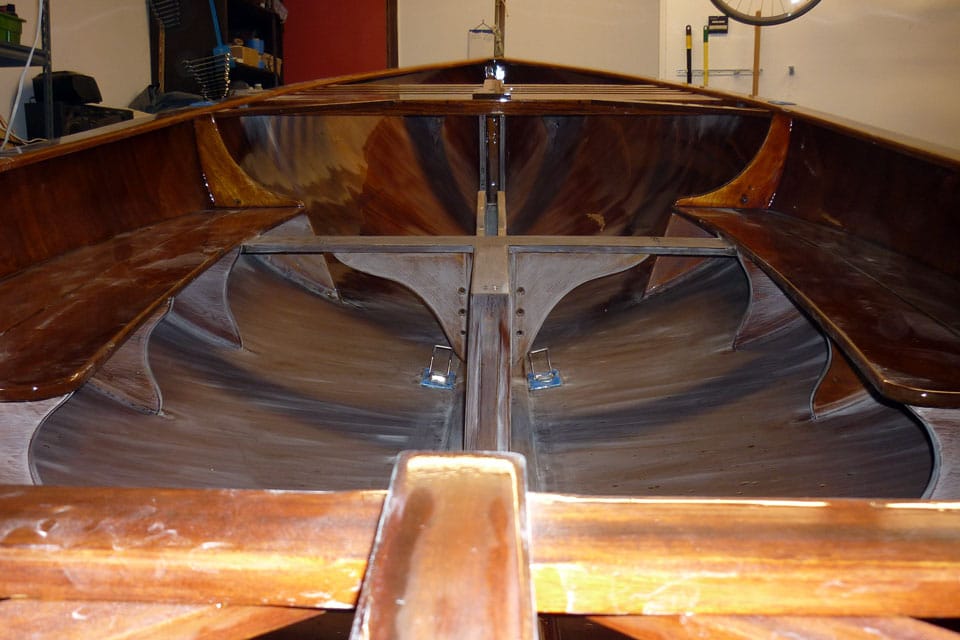
Cliff960
This weekend I jumped off a cliff. Figuratively speaking, of course. Over the holidays, my father and I applied the first coat of varnish to the Sled, the wooden Thistle we’ve been working on for the past few months. (This isn’t a several-months-long project, but that’s what it becomes when work takes place sporadically on the weekends. I’m also in the midst of a several-months-long operation replacing the light fixture above my back door.) On Saturday, it was time to scuff that temporary shine.
The coat of varnish we applied after Christmas turned out well, except for the dust particles that settled into the finish as it was drying. Normally, all we’d need to do to prepare the surface for the second coat would be to scuff up the finish with Scotch Brite pads. But in order to take down the little peaks of dust, we have to lightly sand the whole boat again with 320 grit paper. And when I say we, I mean me, because Dad was laid up with a cold on Saturday.
So back I climbed into the Sled‘s cramped forepeak with sanding blocks in hand. Surveying the boat’s glossy finish, I took a deep breath and began sanding, marring the coat we had so carefully applied. I started with the hardest-to-reach place, the 45-degree angle bars beneath the bow seat (we call it a seat, but if anybody ever sat up there, the boat would submarine into the first wave it encountered). I sanded the bilge, the mast step, the centerboard trunk, underneath the seats, and up under the aft grating. That left me fairly exhausted, so I left the easy-to-reach places for next time.
The process of varnishing the Sled—whether sanding, vacuuming, wiping, or whatever—requires making repeated passes from stem to stern, making sure not to miss any nook or cranny. I started to calculate how many times I’ll pass over the boat during this project, and I figure it’ll be at least 50, from the first pass with 240 grit, to the epoxy repairs, to all the in-between vacuuming, alcohol-wiping, etc. Frankly, I’m ready to be done with this project and go sailing. Thistle Midwinters East takes place in St. Petersburg, Fla., in less than a month, and though I’d never expected to complete the rehab in time for that event, the fact that racers will be slicing up Tampa Bay in a few weeks reminds me that the whole point of this project is to get the boat race ready, not to spend weekends in a cold garage and Monday mornings writing about sandpaper.
But we’ve come too far to start rushing now. I’m trying to remind myself to be patient, to take my time showing the boat the care it deserves. The realization that I’ll have to repeat the whole process every few years only reinforces the need for patience. This is a wooden boat, and it will never stop begging my attention.









